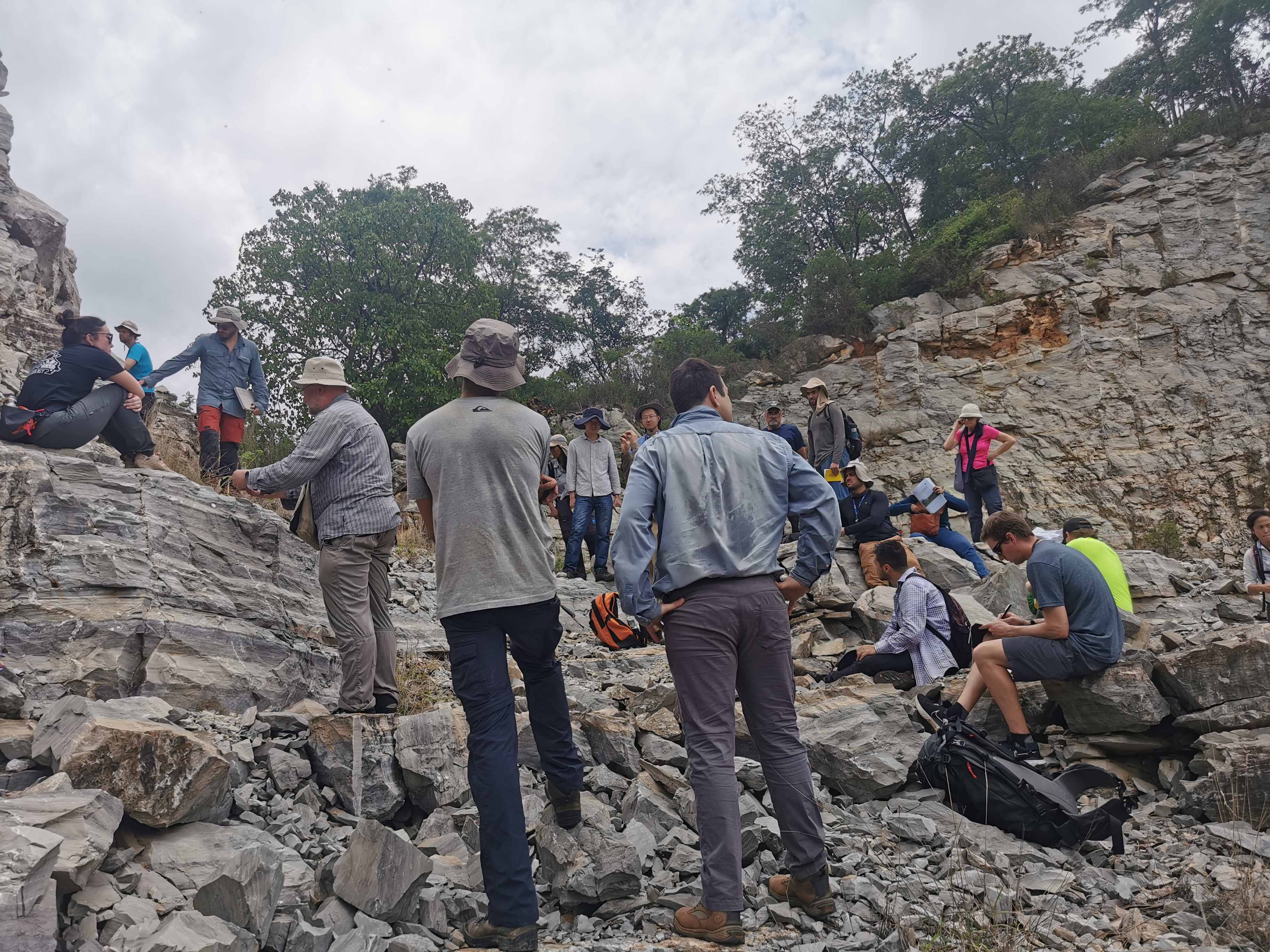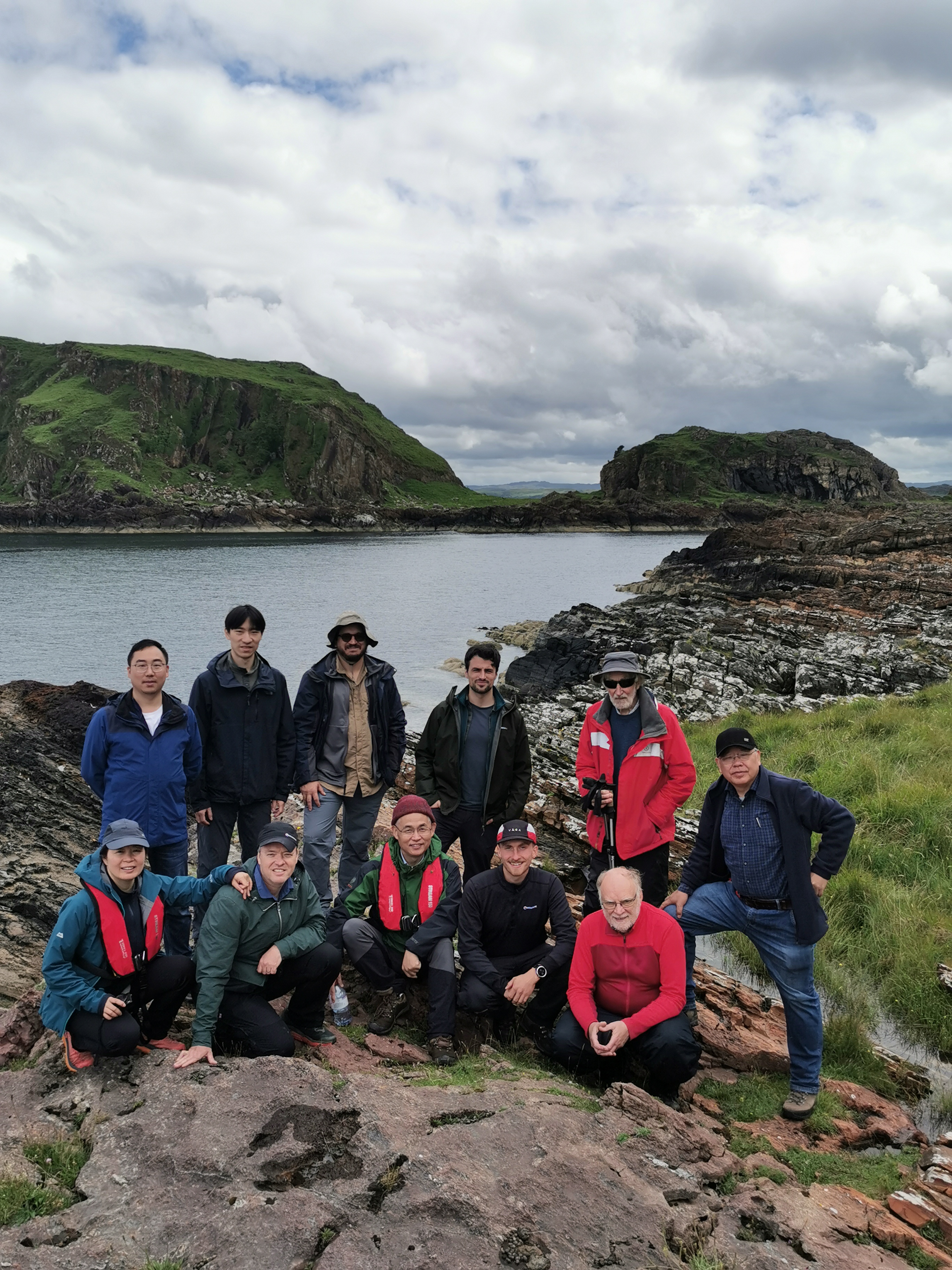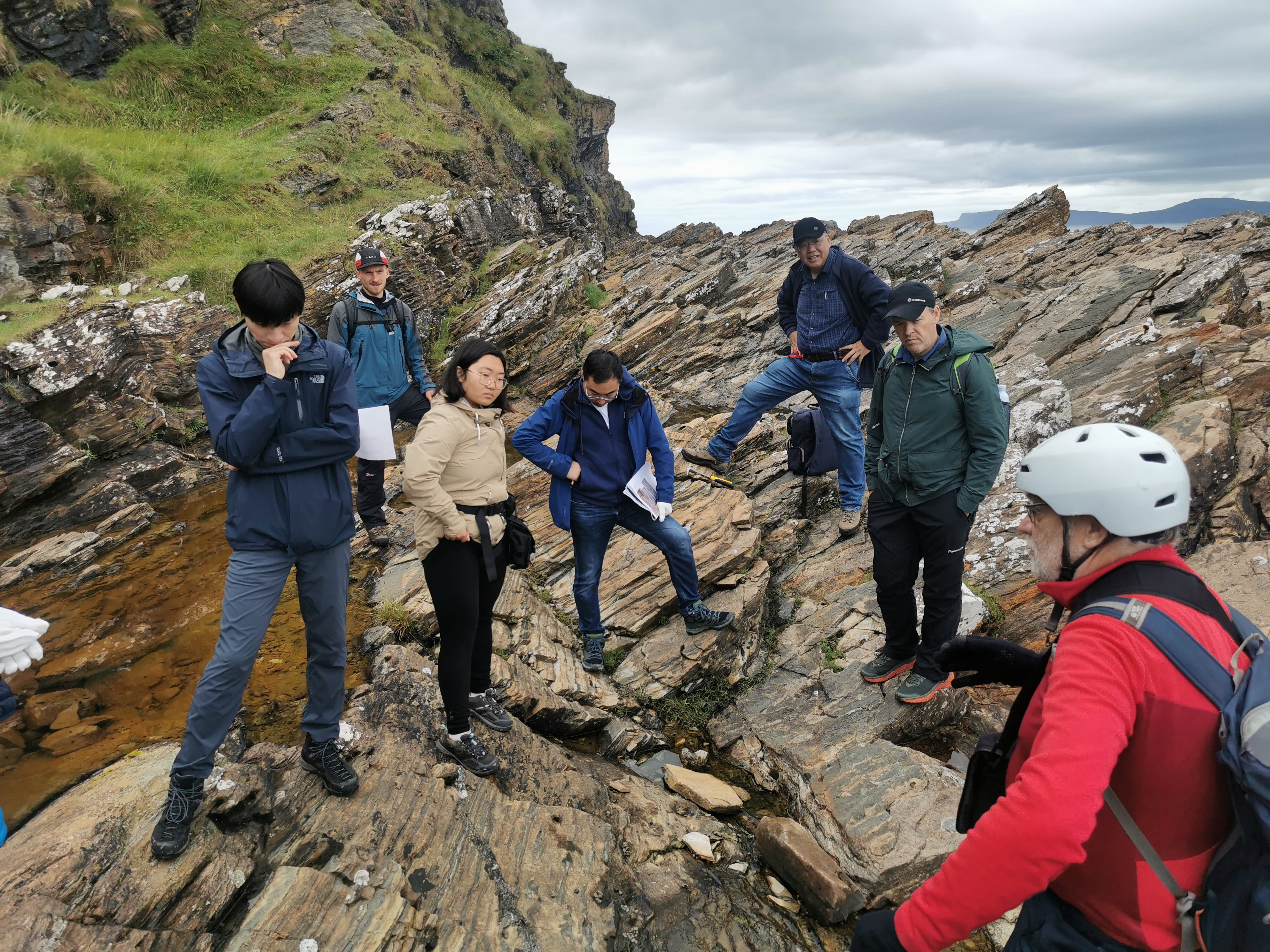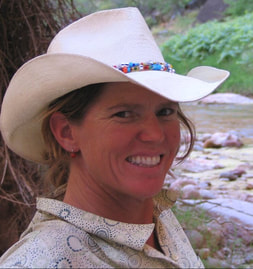Events
Upcoming Events
Fieldtrip to explore Neoproterozoic-Cambrian transitional successions in South China
14th -21st June, 2025
This fieldtrip will be held directly after the 5th International Conference of Geobiology (10th -13th June) in Wuhan. We will set off from Wuhan on the 14th June. Departure will be on the 21st from Guilin. Details and cost are to follow…
Leader: Maoyan Zhu. Organiser: Chuan Yang
Basic itinerary:
06/13 evening: Travel from Wuhan to Yichang by train;
06/14: Visit sections in the Yangtze Gorges area, where we will see the sequence from upper Cryogenian to lower Cambrian (platform setting);
06/15: Travel a long distance from Yichang to Guzhang and visit sections near Guzhang, where we will see the sequence from Cryogenian to Cambrian (slope setting);
06/16: Travel from Guzhang to Jiangkou, and visit outcrops of interglacial Datangpo Formation and the Wenghui biota;
06/17: Travel from Jiangkou to Weng’an and visit the Weng’an biota outcrops;
06/18: Travel from Weng’an to Jianhe and attend the ceremony of the Cambrian Wuliuan GSSP;
06/19: Travel from Jianghe to Zhaoxing and visit Tonian-Cryogenian transitional outcrops;
06/20: Travel from Zhaoxing to Sanjiang and visit Cryogenian successions;
06/21: Travel from Sanjiang to Guilin international airport.
Estimated cost per participant: 1200 USD, including:
Field guides and all support material;
Transfer by train and bus throughout the trip;
8 dinners/7 lunches + non-alcoholic drinks throughout the trip;
8 night hotels;
Logistic assistance.
This seven-day, prostconference fieldtrip will provide an overview of the stratigraphy of Neoproterozoic-Cambrian transition in the South China Block. The stratigraphic units we will examine during this fieldtrip cover successions ranging from the shallow water to deep water facies, including (from oldest to the youngest) the pre-Cryogenian Gongdong, Cryogenian Chang’an, Fulu, Datangpo, and Nantuo formations, Ediacaran Doushantuo and Dengying formations, and the early Cambrian Yanjiahe formations and their equivalents. These units host critical records of Earth-Life System Evolution across the Neoproterozoic and Cambrian transition, including but not limited to the Snowball Earth event, the Neoproterozoic oxygenation event, and the Cambrian explosion. Besides, we will visit the GSSP for the conterminous base of the Miaolingian Series and Wuliuan Stage (Cambrian) at Balang and attend its ribbon-cutting ceremony.

(A) General itinerary of the 2025 fieldtrip in China. (B) Dropstone in the base of Cryogenian at Zhaoxing section. (C) Cap carbonate in the base of Ediacaran at Huajipo section. (D) Eight-armed Ediacara fossil Eoandromeda octobrachiata at Wenghui section. (E) Late Ediacaran trackways in the middle part of Dengying Formation.
Fieldtrip to North Namibia postponed to 2026
Dates and more detailed plan will be updated late this year….
Organisers: Fred Bowyer, Mandy Zieger-Hofmann, Ying Zhou…
Past Events
2024
MagellanPlus Workshop and fieldtrip 2024 14th-20th July, 2024


The subcommission has supported and been involved in the MagellanPlus Workshop and fieldtrip organised by previous submission chair Graham Shields and current correponding member Elias Rugen. During the two days workshop, researchers, many are current and previous members of the subcommission, gave talks on Cryogenian sections around the world. The criteria of basal Cryogenian were also discussed. After the workshop in London, 12 researchers went on a 3-day fieldtrip to the Scotland, visiting the Tonian-Cryogenian transitional section on the Garbh Eileach, led by Graham, Elias and David Webster.

2023
Joint Ediacaran-Cryogenian Subcommissions fieldtrip to Brazil 20th-26th November, 2023

Field excursion to Central Brazil sponsored jointly with Ediacaran subcommission (November 20-26): led by Lucas Warren and Fabricio Caxito, 5 voting members and 3 corresponding members of the Cryogenian subcommission joined. Visits to outcrops of possible Cryogenian/Ediacaran transition of the Bambui Group and discussions among members of two subcommission.

Subcommission Scotland fieldtrip 14th-17th July, 2023

Directly after Strati 2023, 10 voting and corresponding members of the subcommission visited the famous Tonian-Cryogenian transitional section on the Garbh Eileach island, led by Tony Spencer and Ian Fairchild.

Strati 2023 11th-13th July, 2023

The subcommission had a session: SC16-Tonian to Cryogenian stratigraphy, palaeobiology and Earth system change In total, ten talks were given in the session and a subcommission meeting was held during Strati.

Webinar Series
Welcome to the Cryogenian webinar series, hosted by the Subcommission on Cryogenian Stratigraphy and organised by Ying Zhou. We aim to invite researchers to present their current research to prompt discussion around the icy middle part of the Neoproterozoic, the time leading to the Cryogenian Period and its aftermath. If you are interested in stratigraphy, geochemistry (organic, inorganic, isotope), palaeobiology of or related to the Cryogenian Period, feel free to join us (please email Ying) or forward to anyone you think may be interested.

3rd September, 2021. 13:00 GMT, London time 14:00
Glaciomarine iron formations of the Flinders Ranges, South Australia: insights into the Sturtian ice age
Maxwell Lechte
Dr. Maxwell Lechte is a Postdoctoral Researcher at McGill University, funded by the Moore-Simons Project on the Origin of the Eukaryotic Cell. He uses both sedimentological and geochemical approaches in order to research marine iron cycling and palaeoenvironmental change coincident with important intervals of eukaryotic evolution during the Proterozoic.
The Sturtian ice age (ca. 720–660 Ma) marked the start of the Cryogenian Period with arguably the most extreme glaciation in Earth’s history, and investigating the Sturtian sedimentary record is crucial to understanding the impact of this climate change on Earth’s surface systems. Because Cryogenian glacial successions generally comprise thick packages of diamictites and mass flow deposits, obscured by erosional unconformities, deciphering palaeoenvironmental conditions can be difficult. A characteristic feature of Sturtian glacial deposits is the presence of iron-rich, marine chemical sedimentary rocks, and these iron formations offer a unique window into synglacial marine conditions. The Flinders Ranges (South Australia) features some of the best-preserved examples of Cryogenian iron formations which are interpreted to have been deposited in a range of glaciomarine environments, permitting a spatial reconstruction of the palaeoredox landscape. In this talk, I will present the sedimentology, petrography and geochemistry of the glacial-associated iron formations of South Australia, and compare these to broadly correlative examples found globally in order to present a model for Cryogenian iron formation genesis. Multiple geochemical proxies (redox sensitive metal enrichments, Fe isotopes, rare earth elements) reveal widespread marine anoxia with increasing oxidation with proximity to the ice shelf grounding line, suggesting that oxygen may have been supplied to anoxic marine environments by glacial meltwater outwash during the Sturtian glaciation.

20th August, 2021. 11:00 GMT
Cryogenian glacial and interglacial carbonates of the Flinders Ranges, South Australia
Ashleigh Hood
Dr. Ashleigh Hood is a Lecturer in the School of Earth Sciences, University of Melbourne. Her research concerns improving our understanding of Precambrian marine environments and the evolution of the early Earth. To do this she integrates sedimentology, stratigraphy and geochemistry in both field and lab work.
The Adelaide Fold Belt, South Australia hosts an extensive and well-exposed Tonian to Cryogenian stratigraphic succession. This talk will give an overview of this stratigraphy, with particular focus on marine dolomite units and reef complexes from the central and northern Flinders Ranges. Tonian sediments of the Burra Group host tidal-barrier systems and unusual sedimentary magnesite deposits. Sturtian glacial sediments are several kilometres in stratigraphic thickness and include dolomitic lithologies which appear to be marine authigenic precipitates rather than detrital carbonates. These carbonates have carbon isotope signatures which differ from underlying carbonates and show possible stratigraphic trends. Cryogenian interglacial sediments include unusual marine authigenic dolomite horizons (including cap carbonates) and basin-scale, reef complex development. Reefs host deep-water organic frameworks of an encrusting biota that appears to be confined to the Neoproterozoic, and are now composed of dolomite. Marine cements within the reefs show chemical evidence for widespread marine anoxia during this time. It is likely that Neoproterozoic ocean chemical conditions contributed to the abundance of marine dolomite precipitation during this time. The distribution of dolomitic lithologies through glacial and interglacial stratigraphy also has implications for climate conditions during the Cryogenian.
International workshop on “Cryogenian glaciation: the extraordinary Port Askaig record”
26th -27th May, 2021
This workshop is designed to allow full presentations of the results of a long-term field campaign on the 1100 m thick Port Askaig Formation focussed on the extraordinarily complete exposures in the Garvellach Islands and Islay. Presentations include virtual fieldtrips. In total, 13 talks were given in this two-day workshop. If you are interested, please see the note for the workshop.

19th February, 2021. 14:00 GMT
Time-calibrated records of the Tonian and the Tonian/Cryogenian transition from the Tambien Group of the Arabian-Nubian Shield
Nicholas Swanson-Hysell
The Tonian-Cryogenian Tambien Group of northern Ethiopia is a mixed carbonate-siliciclastic sequence that culminates in glacial deposits associated with the first of the Cryogenian glaciations — the Sturtian Snowball Earth. Tambien Group deposition occurred atop arc volcanics and volcaniclastics of the Tsaliet Group. New U-Pb isotope dilution–thermal ionization mass spectrometry (ID-TIMS) dates demonstrate that the transition between the Tsaliet and Tambien Groups occurred at ca. 820 Ma in western exposures and ca. 795 Ma in eastern exposures, which is consistent with west to east arc migration and deposition in an evolving back-arc basin. The presence of intercalated tuffs suitable for high-precision geochronology within the Tambien Group enable temporal constraints on stratigraphic data sets of the interval preceding, and leading into, the Sturtian glaciation. Recently discovered exposures of Sturtian glacial deposits and underlying Tambien Group strata in the Samre Fold-Thrust Belt present the opportunity to further utilize this unique association of tuffs and carbonate lithofacies. U-Pb ID-TIMS ages from zircons indicate that Tambien Group carbonates were deposited from ca. 820 Ma until 0–2 m.y. before the onset of the Sturtian glaciation, making the group host to a relatively complete carbonate stratigraphy leading into this glaciation. New δ13C and 87Sr/86Sr data and U-Pb ID-TIMS ages from the Tambien Group can be used in conjunction with previously published isotopic and geochronologic data to construct newly time-calibrated composite Tonian carbon and strontium isotope curves. The composite Tonian 87Sr/86Sr curve shows that, following an extended interval of low and relatively invariant values, inferred seawater 87Sr/86Sr rose ca. 880–770 Ma, then subsequently decreased leading up to the ca. 717 Ma initiation of the Sturtian glaciation. These data, when combined with a simple global weathering model and analyses of the timing and paleolatitude of large igneous province eruptions and arc accretion events, support interpretations that the 87Sr/86Sr increase was influenced by increased subaerial weathering of radiogenic lithologies during initial rifting of Rodinia at low latitudes. The following 87Sr/86Sr decrease is consistent with enhanced subaerial weathering of arc lithologies accreting in the tropics over tens of millions of years, lowering pCO2 and contributing to the initiation of the Sturtian glaciation. Arc accretion events create steep landscapes that include mafic lithologies. Our work has shown that when such collisions occur within the tropical rain belt they have been particularly effective at enhancing global weatherability and cooling Earth’s climate over the past 520 million years. This process may have also played a role in initiating the glacial climate state of the Cryogenian.

18th December, 2020. 14:00 GMT
A More Complete Cryogenian Record of SE Idaho, U.S.A.
Carol DehlerMark Schmitz, Matt Ellison, Adolph Yonkee, Vince Isakson, F. Macdonald, Corey Wall
The Cryogenian record of SE Idaho and correlatives in northern Utah have long been thought to record two stages of the ~717-660 Ma Sturtian glaciation, with the ~645-635 Ma Marinoan glaciation represented stratigraphically ~2000 m above by regional incision into the Inkom Fm of the Brigham Group. However, recent work on the Pocatello Fm of SE Idaho indicate that characteristic Marinoan cap carbonates are present above the diamictites, which suggested that some of the diamictites previously correlated with the Sturtian glaciation are instead Marinoan in age. To distinguish between these models, one of the thickest (650 m) and best preserved sections of the Pocatello Fm (Scout Mountain section) was sampled for igneous and detrital zircon U-Pb geochronology, which involved an in-tandem method of LA-ICPMS.
In combination with facies analysis, new geochronology has allowed us to construct a new model for the chrono- and physical-stratigraphy of the Pocatello Fm. The base of the Pocatello Fm at Scout Mountain contains mafic and dacitic volcanics interbedded with a diamictite containing striated and faceted clasts. The dacite yielded two ages of 696 Ma and 696 Ma, suggesting that these dacites must have erupted under ice, in the middle of the Sturtian episode. Stratigraphically above the dacites in diamictite, detrital zircon grains yielded a maximum depositional age (MDA) of ~687 Ma. This diamictite is sharply overlain by an arkosic sandstone, which yielded an MDA of ~658 Ma. We interpret this relationship as an unconformity with 10s of Ma of missing strata, including the top of the Sturtian diamicite and the Sturtian cap carbonate, if they were deposited. The arkose is overlain by sandstone and clast-supported conglomerate, and an upper diamictite with faceted clasts, striations, and dropstones that grade into a sandy cap dolostone with negative isotope values of -3 to -6 per mil and an MDA on zircon of ~637 Ma. Above the sandy cap dolostone lies a succession dominated by dark gray argillite and subordinate blue limestone with replaced aragonite fans, indicating post glacial transgression.
The new age model for the Pocatello Formation shows that both the Sturtian and Marinoan episodes of the Cryogenian are preserved, as well as the basal Ediacaran [Marinoan} cap dolostone. Correlation with the Kingston Peak Fm in Death Valley, California provides additional geochronologic tie points, and a keystone for correlation with other Cryogenian strata along the Western Cordillera of North America and beyond. These ages also implicate that the Ediacaran stratigraphy of the region is significantly thicker (3500 m vs 1500 m) and had higher sediment accumulation rates than previously estimated. The incised valleys stratigraphically higher in the Brigham Group may correlate with Ediacaran incised valleys of Nevada and California, however this incision episodes likely post-dates the Gaskiers glaciation at ca. 580 Ma, and may be due either to later Ediacaran sea-level fall or to continued tectonic activity along the margin.
Lastly, although the base of the Pocatello Formation is not exposed, it may provide a good auxiliary reference section for the chosen GSSP for the basal Cryogenian or the existing Ediacaran GSSP, especially because the key sections of the Pocatello Fm are accessible along the Interstate 15 corridor and the Sturtian, interglacial, Marinoan, and basal Ediacaran strata can be easily viewed.
Conferences
Cryogenian glaciation: the extraordinary Port Askaig record
26th -27th May, 2021. Virtual conference via Zoom
This international workshop is in association with the Cryogenian Working Group of the International Stratigraphic Commission.
This workshop is designed to allow full presentations of the results of a long-term field campaign on the 1100 m thick Port Askaig Formation focussed on the extraordinarily complete exposures in the Garvellach Islands and Islay. Presentations will include virtual fieldtrips.
The final version of the programme of the international virtual workshop and the abstracts of talks are now available, please see below or direct download.
If you won’t be able to participate the meeting. Each of the four sessions has been recorded and you can listen to them on David Webster’s YouTube channel at: https://www.youtube.com/channel/UCnvq23gfJdfTtghqq4REw7Q
All the 4 sessions’ recording are also shown below, in total 13 talks followed by interesting discussions.
|
Session 1 |
Session 2 |
|
Session 3 |
Session 4 |
Background of the workshop
Since the memoir of Spencer (1971), the Port Askaig glaciation has been known globally as an outstanding record of late Precambrian glaciation. It has attracted several groups over the years who have produced diverse interpretations of sedimentary environments, whilst the global community has puzzled as to how it could be reconciled with the Snowball Earth model for Neoproterozoic glaciation. Since 2012, the meeting organisers have led an extensive programme of field-based studies, with over 1100 field days so far. Two recent papers showcase a small sub-set of our work (Fairchild et al, 2018 and Ali et al., 2018 in a special issue of Precambrian Research). They demonstrate i) a transitional base in a well-defined chemostratigraphic context on exposures in the Garvellach islands, making it a strong candidate to define the base of the Cryogenian geological system and ii) a wealth of evidence that demonstrates a relatively complete record of depositional and climatic effects compared with other successions worldwide. Through involvement of a wide range of scientists, ranging from those with wide experience in sedimentary and glacial geology through lifetime careers in academia and the oil industry to those just starting out in research, we have developed confidence in new and better substantiated sedimentation models compared with all previous work. Novel features include: delineation of significant non-marine environments; greatly expanded evidence for periglacial activity; many examples of glaciotectonism and subglacial processes; a multi-faceted understanding of the origin of dolomite associations. We are working towards a 3-D archive of the extraordinary complete exposures over more than 10 km of coastline on the Garvellach islands, which will represent one of the most extensive bodies of evidence for any sedimentary formation.
Meanwhile, the improved global geochronological and chemostratigraphic framework over the last 15 years have clarified that the Port Askaig deposits represent the first of two panglaciations in the Cryogenian, allowing correlative successions to be identified globally. An increasing number of sedimentological studies on these correlatives are now available aiding understanding of how these glacigenic deposits relate to Earth system evolution.
The team hope to stimulate feedback and suggestions for future research activity, both by discussion after groups of talks and on-line via Mentimeter. This meeting represents an important step in the preparation of a new Geological Society of London Memoir on the Port Askaig glaciation.
Meetings and Fieldtrips
Subcommission business meeting
28th May, 2021
5th December, 2020. 14:00 GMT
Virtual field workshop with Cryogenian Subcommission
26th-27th May, 2020
Cryogenian glaciation: the extraordinary Port Askaig record
See the workshop record above for more details.
